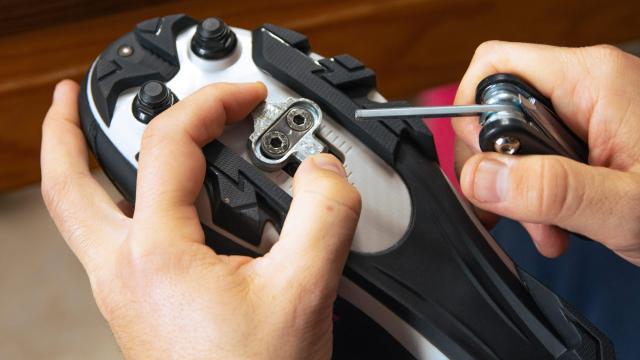Back when I biked everywhere, I would wear my regular sneakers and slip my feet into toe cages that I’d attached to the pedals of my bike. I would sometimes ride with “real” cyclists who had the funny pedals and the shoes that went clack-clack-clack when they walked, and all I felt was gratitude that I would never have to figure out how the heck to use those. Until I took a spin class.
I’ve written before about how I struggled those first few classes, before I got the hang of using the rental shoes. More recently, I got a spin bike to use at home, and after a few rides I realised: I need those shoes.
Why do cyclists use shoes with cleats?
The best argument for getting the right cycling shoes is that they’re great at transferring power from your legs to the pedals. This isn’t a big deal when you’re biking around town, but if you expect to be able to sprint hard in a spin class or stand up from the saddle, you’ll definitely want your shoes to be up to the job.
Wear thin-soled shoes, like Chucks, and you’ll feel the outline of the pedal pressing uncomfortably into your foot. Wear flexible sneakers, like running shoes, and you’ll notice the sole bending during those out-of-saddle climbs. I ended up using hiking shoes before I finally gave in and went shopping for actual cycling shoes.
Your shoes and pedals need to be compatible
Cycling pedals and shoes are not universally compatible. If you look at the bottom of a pair of cycling shoes, there’s a thing on there — it’s on the ball of your foot, and it has screw holes in the middle somewhere. This is the part that attaches to the pedal. This, my friends, is the cleat.
There are a bunch of different cleat systems. Peloton uses a large, triangular cleat called LOOK Delta, while road cyclists often like Shimano’s SPD cleats, and will debate over whether the SM-SH51 or the SM-SH56 is the better one to get. (If you’re riding outdoors and you’re a noob, get the 56. It’s easier to unclip.)
The pedal/cleat/shoe situation can get complicated if you’re riding a bike outdoors, especially once you start considering whether you’ll also need to walk in the same shoes. This is where spin bike owners can breathe a sigh of relief. You’ll only need to walk from your chair to the bike, and you don’t have to worry about how quickly you can unclip in an emergency. You just need something to connect your foot to your bike.
I chose my cleats by searching Amazon for something in my price range, and ended up with a pair of pedals that have a toe cage on one side and an SPD-compatible attachment on the other. I kept that in my shopping cart while I looked for shoes to match, and found a pair that could take SPD-style cleats. If you already have either the shoes or the pedals, take stock of their requirements and get matching parts. Not sure what to search for? These are sometimes called “clipless” pedals, even though people talk about “clipping in,” because they don’t use toe clips.
How to buy a matching set
Shoes and pedals are sold separately, but here’s the thing you need to know: the cleats come with the pedals, even though they attach to the shoes.
You open up your brand-new box of pedals and find the cleats alongside them in a little baggie. Then you open up your brand-new shoes and try them on to ensure they fit as snugly as possible without hurting you, and then you install the cleats from the pedal package on your new shoes.
I found this video helpful when installing my cleats. If yours are a different style, just look up a video about the type you’ve got. Once everything is set up, take a little time to practice clipping in and out, and you’re ready to pedal.
One more thing: Read up on your style of cleat and find out what adjustments you can make. There may be a screw on the pedal itself that makes it harder or easier to clip in, and you may be able to tweak the placement of the cleat on the shoe. After a few rides, you’ll have a better sense of what you might want to adjust.

Leave a Reply
You must be logged in to post a comment.